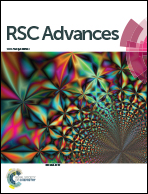Development and evaluation of UHMWPE/woven fabric composite microfiltration membranes via thermally induced phase separation
Abstract
We demonstrate a new kind of ultra-high molecular weight polyethylene (UHMWPE)/woven fabric composite microporous membrane via a thermally induced phase separation (TIPS) method. A dilute UHMWPE/liquid paraffin (LP) solution with a concentration lower than 8 wt% was used in the preparation of the composite membrane. The polyester-cotton (P-C) blended woven fabric was pretreated to remove the polyester component and then the UHMWPE/LP solution was pressed into the interstices of the pretreated woven fabric and wrapped the cotton fibers, then the composite membrane was prepared via the TIPS method. The cloud points and dynamic crystallization temperatures of the UHMWPE/LP solution were determined by optical microscopy and differential scanning calorimetry (DSC), respectively. The results show that the cloud points were similar to the crystallization temperatures, indicating that only solid–liquid (S–L) phase separation occurred during the thermally induced phase separation (TIPS) method of the UHMWPE/LP solution. The mechanical properties and thermal stability of composite membranes were also tested. The parameters such as the concentration and the viscosity molecular weight (Mη) of UHMWPE were optimized and a type of composite microporous membrane was prepared with good penetrating pore flow, dramatically high water flux and excellent bovine serum albumin (BSA) rejection. The composite membrane prepared from 5 wt% UHMWPE with a Mη of 4 000 000 had the largest BSA rejection of 76% and extremely high water flux of 621 L m−2 h−1. The antifouling effect of the composite membrane was also assessed in bovine serum albumin (BSA) aqueous solution.


 Please wait while we load your content...
Please wait while we load your content...